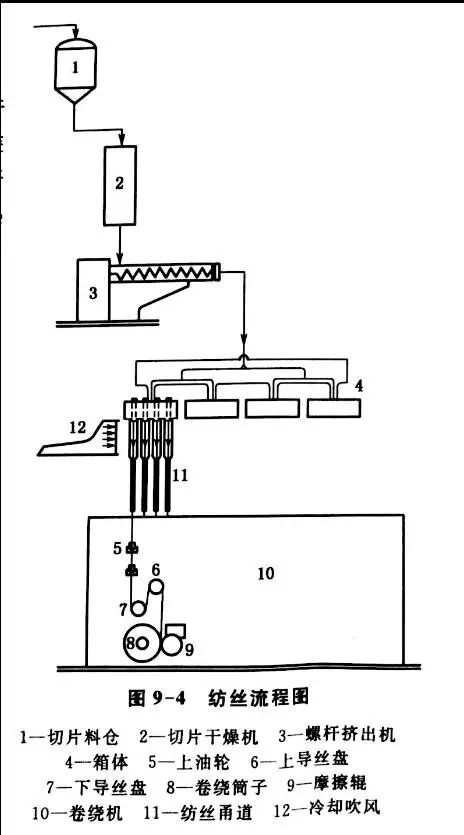


1. Melt extrusion
Slicing relies on self weight to enter the screw extruder from the feed port. Because of the rotation of the screw, the slice moves forward along the screw groove, and the heating element is installed on the outside of the screw sleeve to transmit heat to the slice through the sleeve; at the same time, the friction between the slices in the screw extruder and the heat generated by the extrusion. The chips are heated and melted and extruded by the extruder and have a certain melt pressure.
2. Mixed
The melt at the outlet is mixed uniformly by static mixer, thus enhancing the uniformity of the melt and reducing the difference of temperature and residence time between the tube wall and the tube center when the melt passes through the elbow. If the melt is homogeneous, no static mixer can be used.
3. Measurement
The melt output from the screw extruder is measured by the metering pump which distributes the melt from the distributing pipe to each spinning part to ensure the uniform linear density and evenness of the silk. At the same time, the metering pump can make the melt supercharged to meet the needs of high pressure spinning.
4. Filter
Before filtration, impurities such as sand and other filter materials are filtered out of the melt. Filter materials are emery, sea sand, ultrafine glass beads, filter screen and so on. In high-pressure spinning, the filter layer will produce higher resistance, so that the melt friction heat, temperature rise, improve the rheological properties of the melt.
5. Spinning
After being filtered, the melt is distributed to the spinneret holes on the spinneret by the distributor, and is ejected from the spinneret holes to form a fine melt flow.
6. Cooling forming
The process of cooling the melt flow by cooling medium and solidifying into filament is called cooling forming. At the same time, due to the stretching effect of the spinneret, the melt flow is refined gradually before solidification. The cooling forming is completed in the spinning window, and the forced cooling air from the blowing window at the upper end of the spinning track can ensure the uniform cooling conditions.
7. Oil
As the primary fiber is drier, easy to produce static electricity, and the cohesion between the monofilaments is poor, the filament is loose, friction coefficient is large, can not be processed after. Therefore, oil is needed when spinning. Although different spinning processes have different oiling positions, oiling for the purpose of oiling can be beneficial to the clustering of filaments, reducing static electricity and improving smoothness. Conventional spinning uses oil on the oil tanker. The filament formed by cooling is oiled by contacting the oil tanker before it reaches the winding machine through the runner.
8. Winding
The winding is completed by the upper and lower guide wires, the transverse guide wire and the friction roller. The oil-coated wire rod is wound on the barrel tube by a transverse wire guide after changing the direction of the upper and lower guide wire trays and adjusting the tension. The tube and the friction roller on the winding head are in contact with a certain pressure, and the same linear speed is maintained through friction drive, which is called spinning speed. The winding tension has an effect on the forming and withdrawal tension of the cheese. Winding tension, over feed rate and oil additives are three important factors in winding forming.